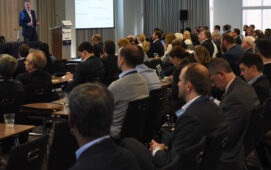The financial industry has long relied on exchanges to provide a stable infrastructure for financial markets. As self regulatory organizations (SROs), exchanges have been guided by regulations intended to protect their members and serve as the foundation of trading infrastructure. Not a small task. Yet, despite the great responsibility, over the years, exchanges have evolved to meet the challenges and opportunities presented by new financial products, faster trading technologies, and a growing list of compliance requirements.
Today, investment strategies are built on the premise that you can quickly act on changing market conditions. The point behind high frequency trading (HFT) is finding opportunities and executing on them to the sub-microsecond. The popularity of HFT has grown enormously in the last few years and has become an essential tool for firms both looking for returns and managing risk. However, as trading becomes faster, the infrastructure needed to support that trading must be able to keep up with ultra-low latency demands and the speed of HFT.
However, today’s trading landscape poses new and unique challenges for global financial markets as a whole. With increased volumes and speeds of trading activity, the race to zero latency is won and being followed by a race to get ahead of the next big system failure. Following several recent outages and guidance from the SEC’s Regulation Systems Compliance and Integrity (Reg SCI), exchanges will have to adapt once again to accommodate today’s increasingly high-speed trading techniques.
Following a recent outage, the SEC recently made it clear that US exchanges will need to step up their game, or face a series of fines and other penalties. So, are global exchanges up for the challenge, and what can they do to remain the bedrock for financial markets?
From responses this November, it seems the answer is a resounding yes – that exchanges are putting together thoughtful plans to provide the stable trading venues of the future addressing issues such as securities information processors (SIPs), critical infrastructure, halts/resumptions, trade breaks, and kill switches.
It’s all about infrastructure and managing risk. Exchanges need to take a closer look at their own operational risk to identify areas in which their infrastructure can be made stronger,and they can learn from the lessons of the past. Easier said than done, right?
The secret is understanding when risk factors are mounting up. If exchanges and their market participants want to prevent future, potentially costly, glitches, they are going to have to get ahead of high speed trading – and with the speed of trading today, that means virtually predicting the future.
Exchanges need to take a harder look at their data, and use their historical data to identify issues before they occur. Rather than implementing static kill switches, in the long term, the situation calls for a more dynamic solution that continues to evolve as the market does, giving exchanges the edge to remain the cornerstone of financial trading.
Predictive analytics is the front-runner as far as dynamic technology solutions that are able to deal with this type of challenge. Predictive analytics can be used to provide business intelligence that enables better decision management by building on the premise that situations in the present are often similar to situations in the past so lessons learned, and best practices of the past can be used to better predict similar situations in the future. By using a firm’s own historical data and bringing in the concept of Case-Based Reasoning (CBR), predictions made are better able to navigate the complex analysis required within financial markets. Verdande Technology is working with brokers, exchanges, and other financial institutions to bring together CBR and complex systems analysis under the umbrella of predictive analytics to create a more stable financial market structure for the future.
Subscribe to our newsletter




